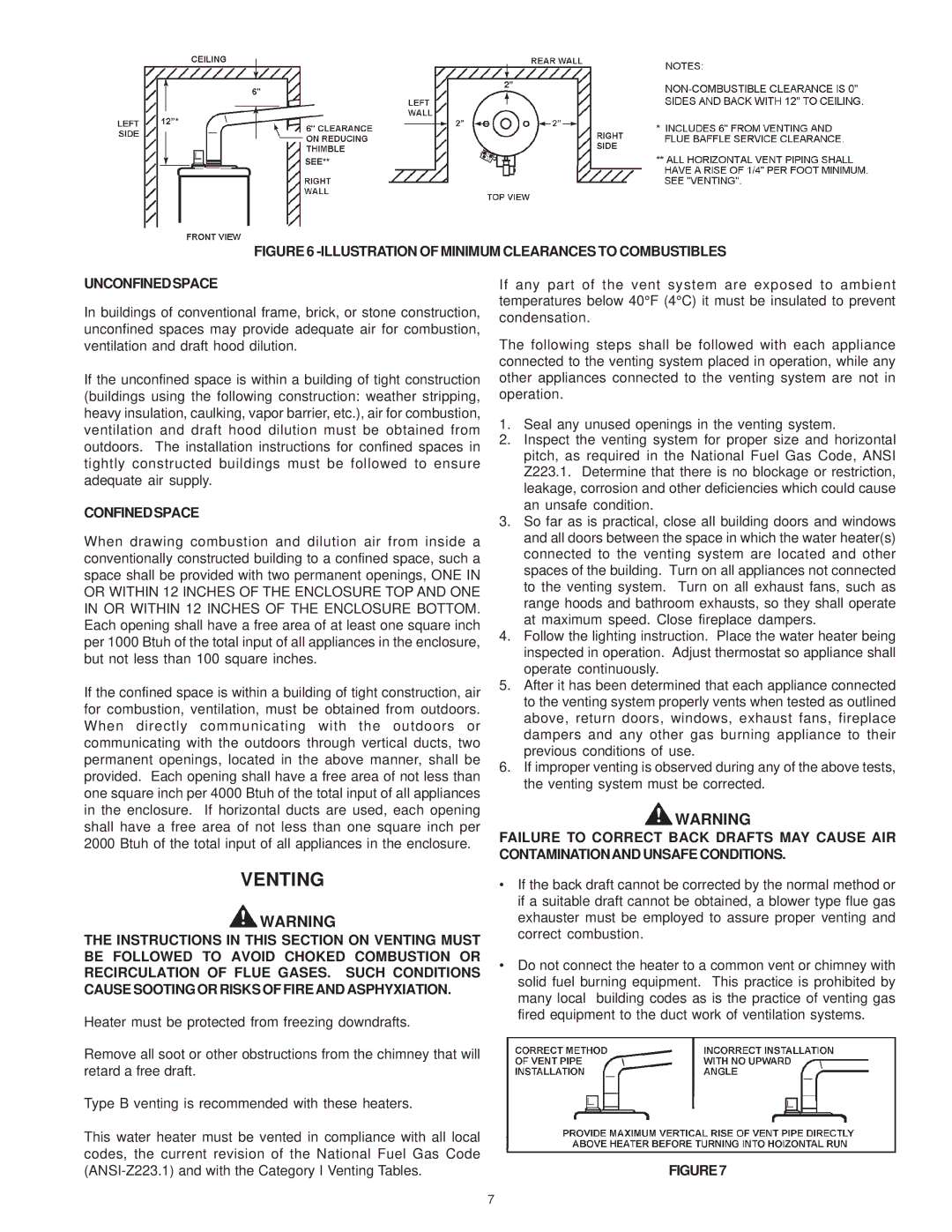SBD 30 150 specifications
The A.O. Smith SBD 30 150 is a high-efficiency water heater designed to meet the hot water needs of residential applications. Renowned for its reliability and performance, this model exemplifies A.O. Smith's commitment to innovative technology and energy efficiency.One of the standout features of the A.O. Smith SBD 30 150 is its capacity. With a 30-gallon tank, it is ideally suited for small to medium-sized households. This makes it an excellent choice for families or individuals who require a steady supply of hot water for various applications like bathing, cooking, and cleaning.
The SBD 30 150 is equipped with a powerful, efficient heating element that delivers quick recovery rates. This means that users can expect hot water when they need it without long waiting times. The advanced insulation technology employed in its design reduces heat loss, allowing the unit to maintain a steady temperature and operate at optimal efficiency.
Energy efficiency is a key characteristic of the A.O. Smith SBD series. It features Energy Star certification, demonstrating its ability to provide hot water while minimizing energy consumption. Users can enjoy the dual benefit of reduced energy bills and a smaller carbon footprint. This model is particularly appealing to eco-conscious consumers looking to integrate green technologies into their homes.
In terms of durability, the SBD 30 150 is built with high-quality materials designed to withstand the test of time. Its glass-lined tank provides excellent corrosion resistance, which is essential for extending the lifespan of the unit. Additionally, the heater includes a durable anode rod, which serves to protect the tank from galvanic corrosion, further enhancing its longevity.
Convenience features are also notable in this model. It comes with a thermostat that allows for easy temperature control, enabling users to set the preferred hot water temperature without hassle. Moreover, the compact design of the SBD 30 150 makes it easy to install in various settings, whether it’s a small utility area or a basement.
In conclusion, the A.O. Smith SBD 30 150 water heater stands out as a practical and efficient solution for anyone in need of reliable hot water. With its impressive features, energy-saving technologies, and robust design, it is a smart investment for long-lasting performance and comfort in everyday life.

